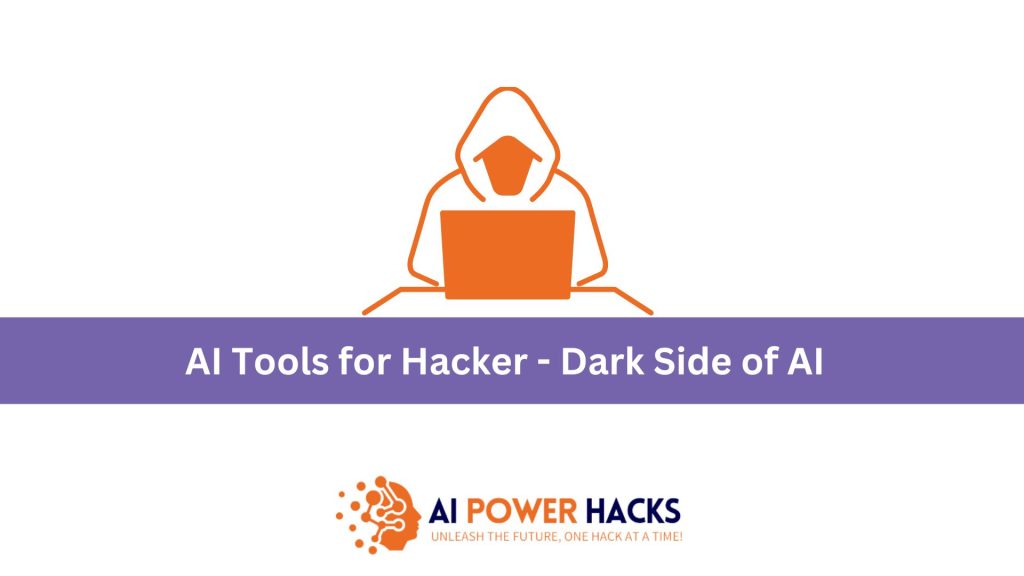Artificial Intelligence (AI) has revolutionized industries ranging from healthcare to banking. It is bringing unprecedented advancements and efficiencies. However, as with any powerful technology, AI has a dark side. Cybercriminals use AI tools for hackers to meet malicious purposes. It is giving rise to what is now known as “dark AI.” This growing trend poses significant challenges for cybersecurity professionals worldwide. In this blog post, we’ll explore the top 7 AI tools for hackers available on the dark web that hackers are using to carry out cybercrimes. Understanding these tools is crucial for staying informed and protecting yourself from potential threats.
Never use these AI tools for hackers, this blog post is for your information to keep you updated regarding darker side of AI. It is illegal to use hacking tools. We should make the use of AI positively in all the fields.
1. Worm GPT: The Hacker’s AI Assistant
Worm GPT is a sophisticated AI chatbot. It assists hackers with programming and hacking tasks. Built on the open-source GPT-J language model, it boasts multilingual capabilities and can interpret and generate natural language text. Unlike its mainstream counterparts, Worm GPT operates without ethical restrictions or filters. This means it was trained on datasets heavily skewed toward malicious activities, making it a powerful tool for cybercriminals.
2. Auto GPT: The Autonomous Hacking Tool
Auto GPT is an experimental, open-source Python program powered by GPT-4. What sets it apart is its ability to function autonomously with minimal human intervention. Users can define a goal, and Auto GPT will generate the necessary prompts to achieve it. Features like internet connectivity, memory management, and file storage make it a versatile tool for hackers looking to automate complex tasks.
3. ChatGPT with DAN Prompt: Bypassing Ethical Boundaries
DAN, which stands for “Do Anything Now,” is a set of prompts that override ChatGPT’s ethical programming. By using DAN prompts, hackers can manipulate ChatGPT to generate content on prohibited topics such as drugs, violence, and crime. This flexibility makes it a popular choice for malicious actors seeking to exploit AI for unethical purposes.

4. Freedom GPT: Offline and Unrestricted
Freedom GPT is an open-source AI language model similar to ChatGPT but with a critical difference: it can operate offline. This means all interactions remain on the user’s device, providing a layer of anonymity. While this feature has legitimate uses, it also makes Freedom GPT an attractive option for hackers who want to avoid detection.
5. Fraud GPT: The Cybercriminal’s Dream Tool
Fraud GPT is an AI chatbot tailored for cybercrime. Accessible through select Telegram channels, it specializes in generating realistic and convincing text to deceive victims. From writing malicious code and creating phishing pages to identifying vulnerabilities, Fraud GPT is a one-stop shop for hackers looking to execute scams and cyberattacks.
6. Chaos GPT: Introducing Errors and Confusion
Chaos GPT is a modified version of GPT-3 designed to introduce errors and inconsistencies in its outputs. Trained on a massive dataset of over 100 trillion words, it is one of the largest language models available. Its primary purpose is to disrupt and mislead, making it a valuable tool for spreading misinformation or sabotaging systems.
7. Poison GPT: Spreading Malware and Misinformation
Poison GPT is a proof-of-concept language model created by security researchers to demonstrate how AI can be used to spread malware and false information. By generating biased or malicious content, Poison GPT can infiltrate systems and manipulate public opinion, highlighting the dangers of unregulated AI.
A Word of Caution
While these tools may seem intriguing, it’s important to emphasize that using them for malicious purposes is illegal and unethical. The rise of dark AI underscores the need for robust cybersecurity measures and ethical guidelines to prevent the misuse of AI technology.
Conclusion
The increasing use of AI by cybercriminals is a stark reminder of the dual-edged nature of technology. From stealing sensitive data to spreading misinformation, hackers are leveraging AI tools to carry out sophisticated attacks. To combat this, individuals and organizations must stay informed and adopt proactive cybersecurity practices.
By understanding the risks and staying vigilant, we can use the power of AI for good while mitigating its potential for harm. Let’s work together to ensure that technology remains a force for positive change.


